Nematanthus gregarius is an unpretentious houseplant with unusual elongated flowers of red or orange. For the decorative colors it is popularly called the "goldfish". In the wild, it can grow in the form of a vine, shrub, or herbaceous bush. And how to propagate nematanthus, what are the rules for caring for it and how to protect the plant from pests, we will analyze in our article.
Material Content:
Species and varieties
Nematanthus looks like a hypocirth flower and columnia, because of which it was previously mistakenly attributed to their kindred. In indoor conditions, it is a branchy bushes of different sizes, depending on the variety.

It is difficult to resist the temptation to acquire this plant, having once seen its flowering. But which grade to choose?
There are few species of nematanthus in nature, so indoor varieties also do not differ in variety.
The most popular specimens among amateur gardeners are several varieties:
- Nemantanthus riverine is a vine, in the wild, climbing up the trunks of trees. It is distinguished by satin-green leaves with a reddish tint on the underside.
- Nematanthus Fritsch in nature grows just above half a meter. The leaves are large, reddish below, the flowers are bright pink.
- Nematanthus ankle is a branched shrub that tends to curl around tree trunks. The leaves are large, light green. Single flowers of red color with a long peduncle.
- Nematanthus Vetstein is a highly prone herbaceous shrub. Its shoots can reach 90 cm in length. The leaves are small, oval, dark green in color. The flowers are orange-red.It blooms profusely and continuously.
Nemantanthus: nuances of growing
In general, the nematanthus is unpretentious, so it grows well even without serious care. But, following some simple rules, you can achieve rapid development and abundant flowering plants.
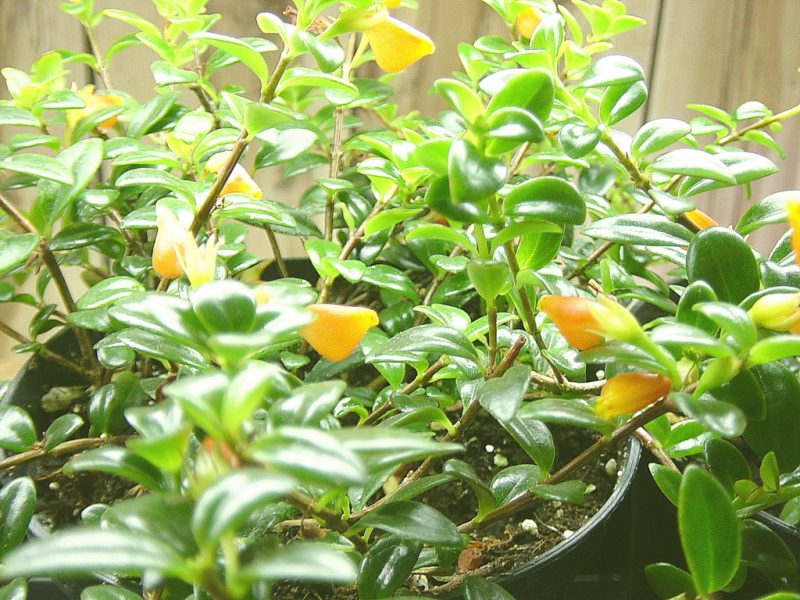
He loves good lighting, moderate watering, light coolness from December to February. It should be protected only from direct sunlight, excessively low and too high temperatures.
Home Care
Nemantanthus loves bright but diffused light. It is not recommended to place it on the southern windows without shading, which can be arranged with a mesh fabric or half-closed blinds. The ideal location of the nematanthus is the western and eastern windows. In the northern plants can survive, but flowering from it will not succeed.
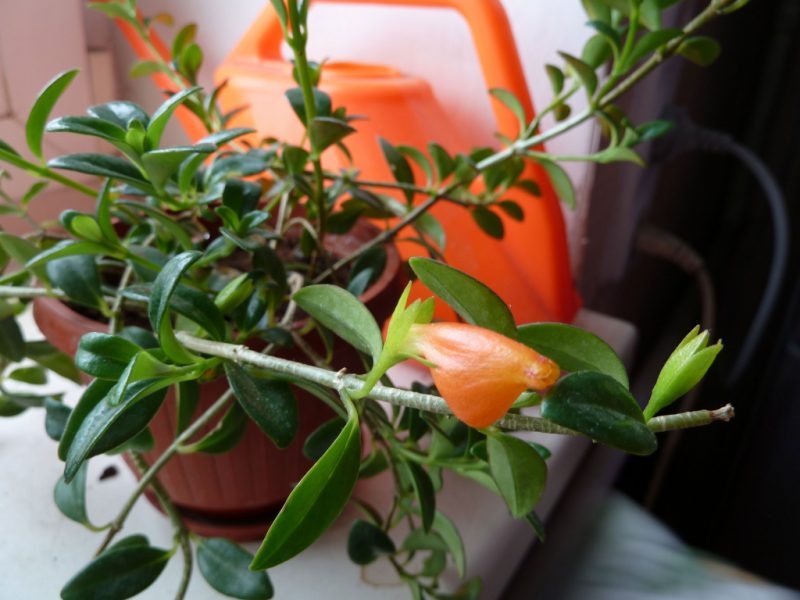
- In winter, nematanthus is recommended to be placed in a bright room with a temperature of 14-17 degrees. If he hibernates in the warmth, then he should provide maximum lighting, and in the shortest and most cloudy days - additional illumination.
- Small specimens can be placed under a conventional fluorescent lamp, and large ones under phyto-lamps or DNAT and DNAZ lamps. The latter are usually used in apartments only with a large number of plants on the windowsill, since they consume a lot of electricity, creating a powerful light flux that is close in brightness to sunlight.
A compromise option would be to buy DNAT or DNAZ lamps with a power of 70 or 150 watts.
- In summer, nematanthus is kept at a temperature of 19 to 24 degrees. You should not allow the temperature to rise above 27 degrees in the summer and drop below 7 degrees in the winter: a plant under such stressful conditions discards leaves, weakens, and is depleted. Although short-term one-night night cooling to +5 it can endure without difficulty.
- In the growing season, nematanthus is moderately watered with hypocirrhosis, not allowing drying out of the earthen coma or gulf of the root system, which may cause root rot.
- In winter, watering becomes less frequent, since, on the one hand, the plant begins to consume less moisture, and on the other, evaporation from the soil surface decreases due to lower ambient temperatures. If tap water is used, then it is defended for at least a few hours, and optimally - a day.
The goals of sedimentation: sedimentation of salts at the bottom and heating or cooling of water to the air temperature in the room where the flower stands.
- Loves nematanthus moderate air humidity of about 50-60%. Usually unacceptable dryness is observed on hot July and August days on southern windows or on balconies. The way out is to move the plant to the western, eastern windows or plant it in open ground under a tree or behind dense thickets that cast a shadow on the plant in the midst of the day. If we are not talking about particularly sultry periods, then he does not even need daily spraying, although they still will not harm him and will even benefit. Only during flowering should this be done so that moisture does not linger on the flowers, otherwise they may fall.
Nemantanthus: propagation by seeds and cuttings
The simplest and most affordable way to reproduce nematanthus is cuttings.
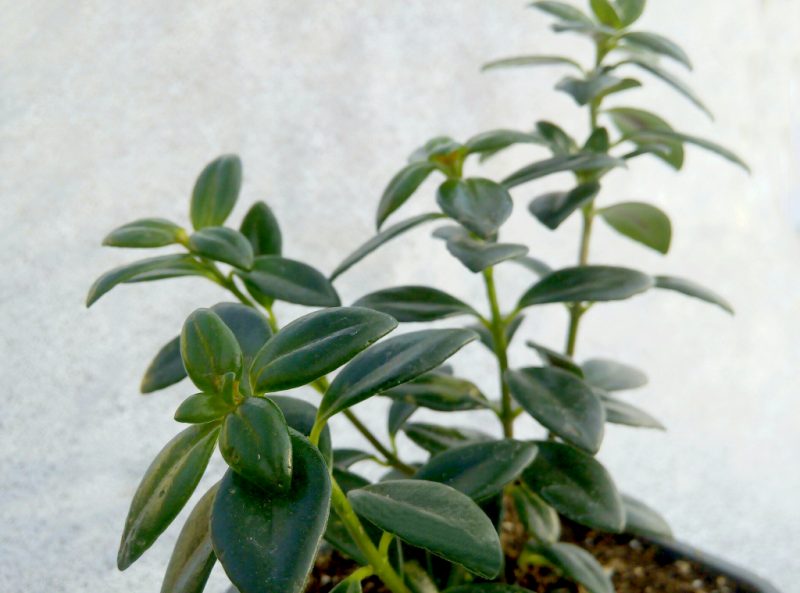
- To do this, cuttings with a length of 6-10 cm are cut from long shoots.
- The lower leaves are removed from them, the sections are leveled with a sharp blade and put to root in water, coarse sand, sphagnum moss or in a light substrate with a high peat content.
- As practice shows, almost 100% rooting is observed in peat soils.
- Cuttings are kept at a temperature of 23-24 degrees in a bright place without drafts.
- To speed up the process, containers can be covered with plastic wrap, although a high percentage of rooting is observed without this measure.
- The roots appear after 2-3 weeks, and after a week they reach sufficient length for planting a young plant in a pot for permanent residence.
- The first flowering can be achieved even in the year of rooting, but if the plant is too small or looks weak, then it is better to cut off the flowers.

Propagation by seeds is a more laborious and lengthy process. Seeds of this species are very small, almost dusty.
- To sow them, you will need a shallow tank with loose light soil. The bottom must have drainage holes.
- Seeds are evenly distributed over the surface of the soil and, without sprinkling, sprayed from the spray bottle with fine water dust.
- The containers are covered with a plastic bag or mini-greenhouse and placed on a light, warm window sill.
- You can air them once a week, removing the shelter for 1-2 minutes. When mold or white fungus appears, you can use the Fitosporin preparation.
- Shoots appear after 3 weeks, after which they are gradually weaned from high humidity under cover. For this, they begin to arrange aeration first 2-3 times a week, then every day. After 3 weeks, you can make a hole in a plastic bag, and after another week - completely remove the shelter.
- The grown seedlings are planted in small pots. Their flowering can be expected with proper care next year.
Read also:home care for Hamedorea
Plant transplant
The nematanthus flower is transplanted only as necessary - when the roots completely surround the earthen lump. This is usually revealed when they begin to peek out of the drainage hole. Do not overload nematanthus ahead of time in order to prevent rotting of the root system after excessive watering.

- The new pot should be 1-3 cm in diameter larger than the old.
- At the bottom should be laid a drainage layer of 2-4 cm, consisting of pebbles, expanded clay, clay shards, or at least coarse sand.
- The soil that needs to be added should be loose, light. For loosening, you can add pine sawdust, perlite, vermiculite, turf or leaf humus, peat, coarse sand. Suitable purchased soil on the basis of peat, which must be mixed with ordinary garden soil.
Pests and diseases of the indoor flower
Pests rarely attack nematanthus. But sometimes this flower is affected by aphids, thrips, mealybugs, spider mites.
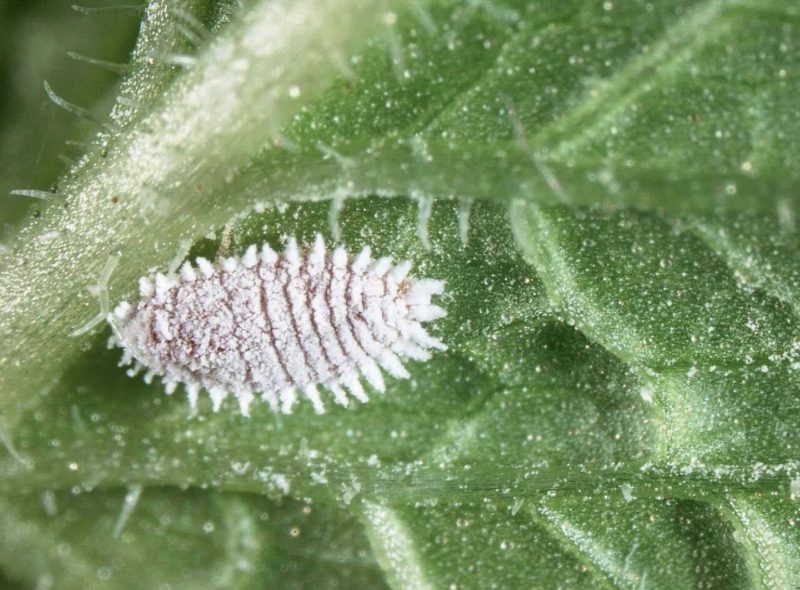
All of them, except the tick, are easily excreted by any contact insecticides.
The most popular preparations are Inta-Vir and Komandor, although any suitable where it is indicated that it is an insecticide are suitable.
Spider mites are excreted only by acaricides or insecto-acaricides. The most popular remedy for ticks is Fitoverm, but you need to keep in mind that it is effective only in the early stages. If the whole plant is abundantly studded with small red dots, then Fitoverm can only temporarily drive away the pest, but after a few weeks or months it will appear again.
In such cases, more powerful drugs are used:
- Sunmight;
- Omight
- "Bitoxybalicin";
- Neoron et al.
If it is not possible to get strong anti-tick remedies, then it is possible to exceed the concentration of “Fitoverm” in solutions by 2-3 times, compared with the recommended ones, and perform 2-3 sprayings at weekly intervals.
Possible growing problems
Most often, the nematanthus manifests his dissatisfaction with environmental conditions in the form of dropping leaves. This is usually associated either with too low or with too high a temperature.
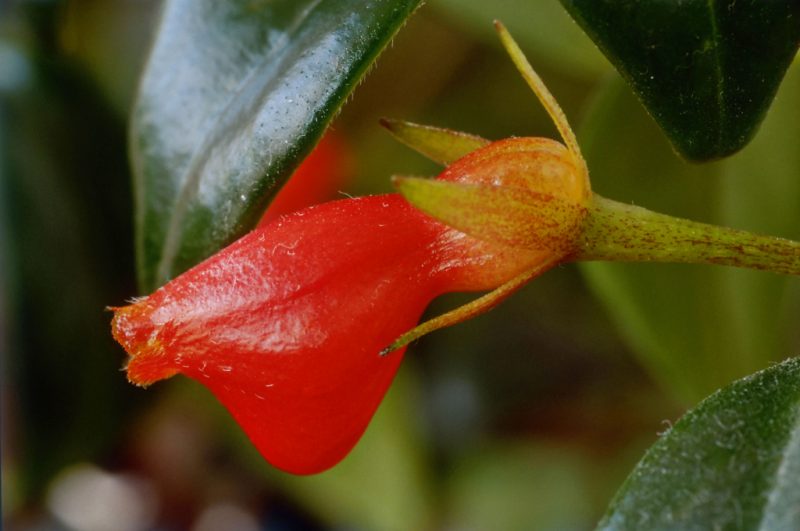
- Sometimes on hot summer days, plants also suffer from dry air, as indicated by the drying ends of the leaves and yellowing of the leaf blades.
- Light brown spots on the leaves indicate either overflow of the flower, which leads to decay of the root system, or overcooling of the roots, which occurs when watering with cold water or a draft blowing around the pot.
- Curling leaves indicate that the earthen lump is overdried.If this is observed even with regular watering, perhaps the soil in the pot has become too dense, so it is not completely saturated with moisture. In this case, a plant transplant with soil replacement is recommended.
- If the flowers turn brown and fall, it means that they get too much water. When spraying the nematanthus, try to ensure that the drops do not settle on the petals.
But do not be afraid of possible difficulties! "Goldfish", in fact, is unpretentious in leaving and everyone is able to cope with its cultivation. It is enough to water the plant moderately, to provide it with light, a light winter coolness, so that it delights the owner with beautiful flowers, sparkling like the scales of a goldfish.












